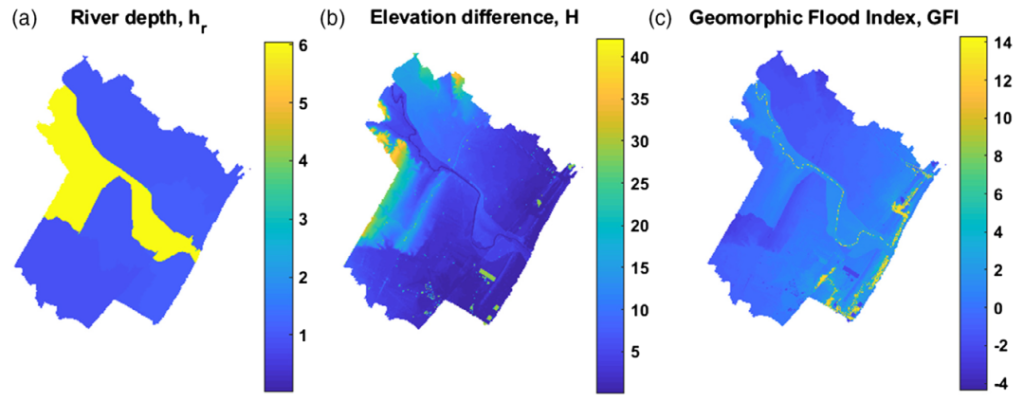In recent years, the acquisition of data from multiple sources, together with improvements in computational capabilities, has allowed to improve our understanding on natural hazard through new approaches based on machine learning and Big Data analytics. This has given new potential to flood risk mapping, allowing the automatic extraction of flood prone areas using digital elevation model (DEM) based geomorphic approaches. Most of the proposed geomorphic approaches are conceived mainly for the identification of flood extent. In this article, the DEM-based method based on a geomorphic descriptor — the geomorphic flood index (GFI) — has been further exploited to predict inundation depth, which is useful for quantifying flood induced damages. The new procedure is applied on a case study located in southern Italy, obtaining satisfactory performances. In particular, the inundation depths are very similar to the ones obtained by hydraulic simulations, with a root-mean-square error (RMSE) = 0.335 m, in the domain where 2D dynamics prevail. The reduced computational effort and the general availability of the required data make the method suitable for applications over large and data-sparse areas, opening new horizons for flood risk assessment at national/continental/global scale.

How to cite: Salvatore Manfreda, Caterina Samela, A digital elevation model based method for a rapid estimation of flood inundation depth, The Chartered Institution of Water and Environmental Management, Journal of Flood Risk Management, John Wiley & Sons Ltd 2019 (doi: 10.1111/jfr3.12541), 2019. [pdf]
